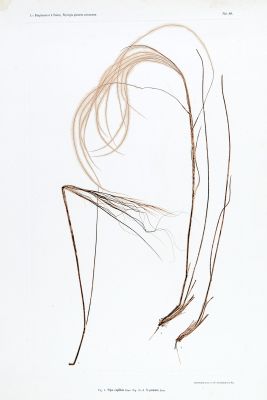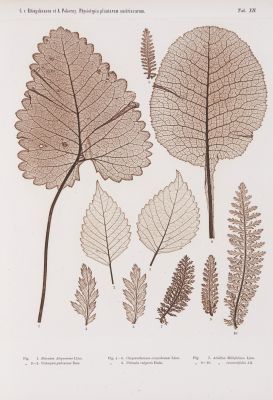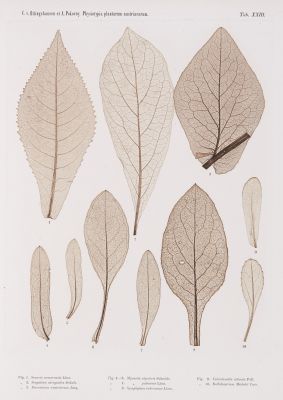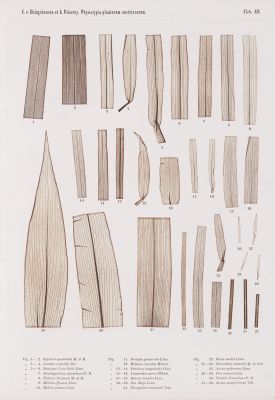
Title
Tab. IVArtist
Auer, Alois (Austrian, 1813-1869)Publication
Physiotypia Plantarum AustriacarumDate
1856Process
Nature PrintAtelier
Alois AuerImage Size
25.7 x 21 cm
The present plate was printed under the supervision of Alois Auer, the inventor of the nature printing process, at the Vienna state press. In Auer’s method, which can only be used with objects with tolerably flat surfaces, the object is placed between a plate of steel and another of lead, both of which are smooth, and polished. They are then drawn through a pair of rollers under considerable pressure. When the plates are separated, it is found that a perfect impression of the object has been made in the leaden plate. This may be used directly as an engraved plate, but only if a very few impressions are wanted, for it is too soft to resist the action of printing presses for practical purposes. For larger numbers of images, a facsimile to be used as the printing plate is made in copper by the electrotype process. By rolling several colors on the copper printing plate, Auer produced polychrome nature prints. In an era before photography and photogravures became commonplace, nature printing provided precise reproductions of three-dimensional physical objects, which were otherwise incredibly time-consuming. Nature printing allowed for true scientific precision because an exact impression of the plant was used to create the plates. To the modern eye this plate has an almost photographic beauty to it.
Constantin Freiherr von Ettingshausen, an Austrian botanist, palaeontologist and mineralogist, was a keen supporter of nature printing and published a number of works using the process. Alois Pokorny worked with von Ettingshausen to improve the quality of nature printing.
References
Eder, Josef M, and Edward Epstean. History of Photography, by Josef Maria Eder. Translated by Edward Epstean. New York: Columbia University Press, 1945.
The Photographic and Fine Art Journal pg. 75, 1










